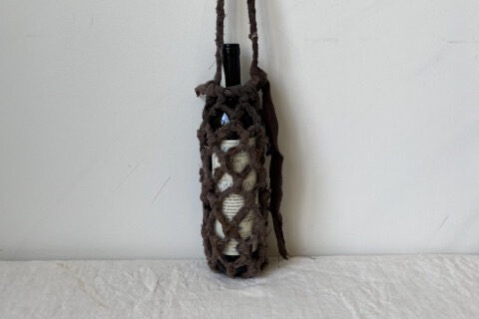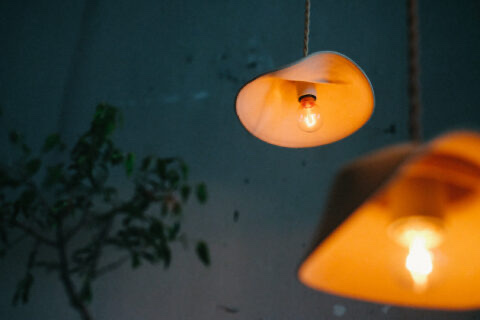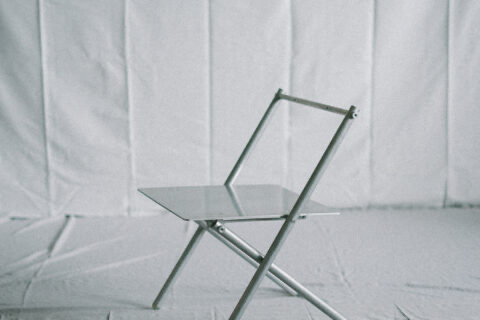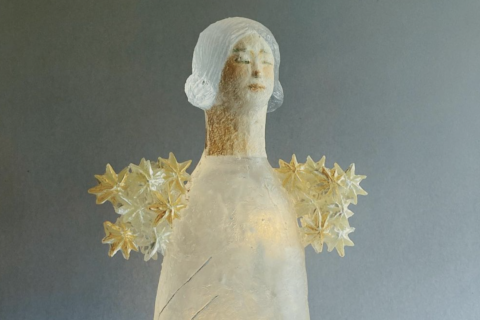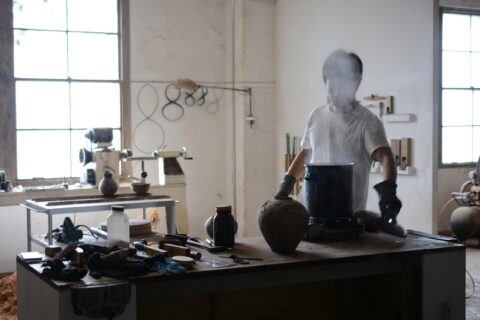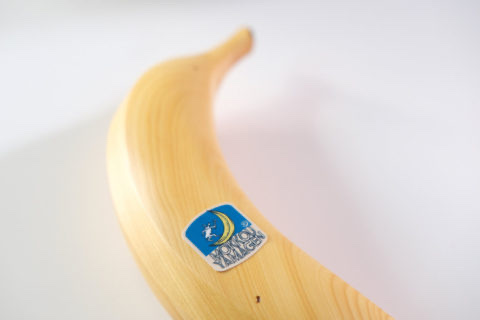
仍閉著眼便感到光線透進,強睜開眼看鐘,才不過早上五時,這大概是一天之中最難過的時刻,給陽光喚醒的身體仍然沉重,精神便硬被拖出夢鄉,混混沌沌。好想再睡一下,於是在床前的書櫃亂摸,總算抓著了隨手擱路的眼枕,往眼前一蓋,世界回覆黑暗,而且漂浮著薰衣草香,思緒的起伏立時被撫平,我再次回到夢裡去。
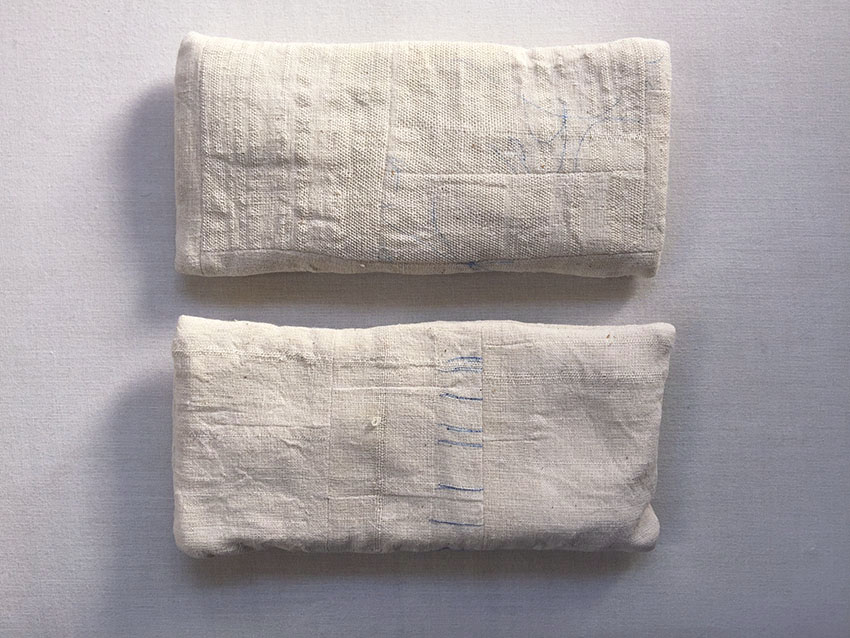
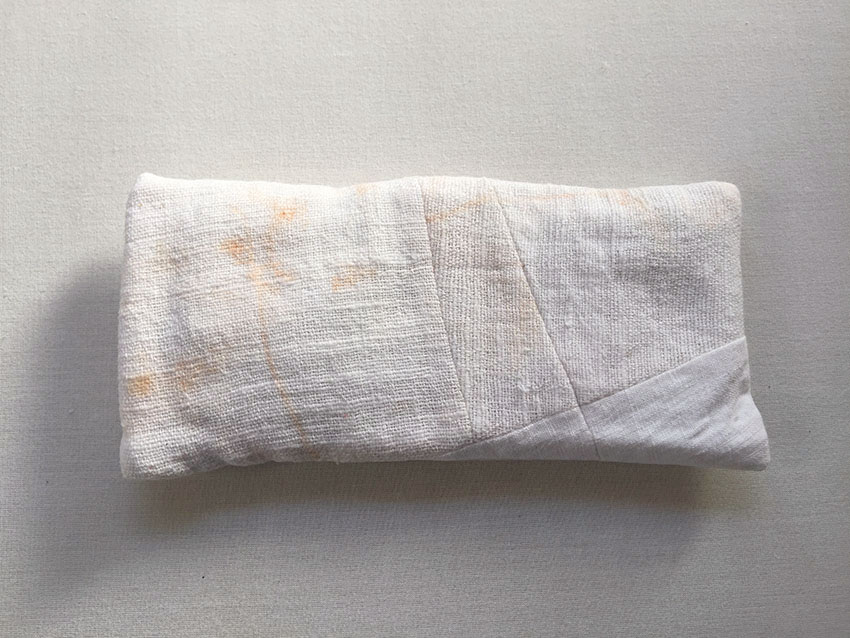
絲室是磯部祥子成立的布藝品品牌,靠墊、茶壼套、杯墊、袋子、眼枕……絲室所有作品,都是純淨的白,卻沒有任何一件是相同的。除了因為她縫製的方式外,也因為她選擇了產自印度的手工布藝Khadi。
當印度還是英國的殖民地時,英國為當地引入了大量以機器大量生產的棉布,而Khadi則是甘地提倡使用的布料,由全手工製作,縱橫交錯的棉線不比機器生產的平均,卻因此使每一塊都有著各自不同的表情與質感。Khadi的獨特,正正暗示了當時印度堅持獨立的決心。
Khadi的故事、冬暖夏涼的特質,深深吸引著磯部祥子,促使她曾多次探訪印度。磯部祥子對Khadi的魅力有著無比的信心,因此她的設計都是極盡樸素的,唯一的巧思,只在布料的拼貼之上。同樣素白、看似大同小異的Khadi,組合起來時才顯得彼此是何等的獨一無二。
「日常生活裡,布是與我們皮膚最貼近的素材,撫在手裡時感覺美好的,會使我們心靈也平靜下來。」磯部祥子在一次訪問中說。我眼部的皮膚感受著她選來的Khadi時,深切的體會到她所說的話。
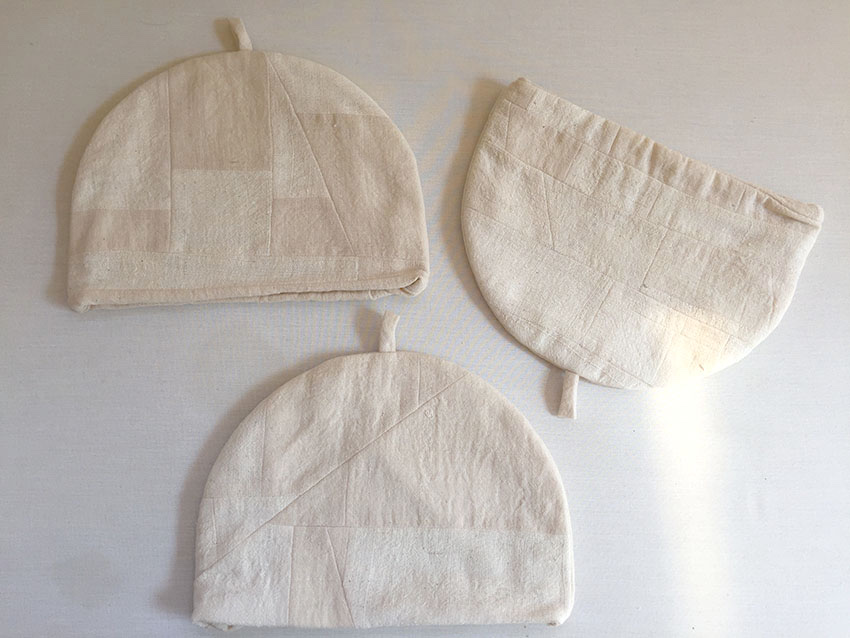
I could feel the light seeping through even with my eyes closed; I struggled to open my eyes only to find on the clock that it was only 5 in the morning. This could probably be the worst moment of the day to have my exhausted body reluctantly woken up by the sunshine. My mind was forcefully kicked out from my dream and ended up in a chaotic state. Hoping to get back to sleep, I fumbled for the eye pillow that I carelessly placed in the bedside cabinet. I put it over my eyes, darkness immediately returned with a calming scent of lavender that accompanied me back to my dream.
Itoshitsu is a textile brand founded by Sachiko Isobe that specializes in cushions, teapot covers, coasters, bags, eye pillows. Although all their products are consistently in white color, every item of Itoshitsu’s product is unique, partly because of Isobe’s knitting technique and partly because of their use of Khadi, the hand-woven fabric from India.
Back in the days when India was still under the British colonial rule, the British largely promoted industrial and mass production of cotton in India. Khadi, on the contrary, was the fabric Gandhi advocated to use. The hand-woven technique cannot create evenly woven fabric like how the machine does, however, it can give rise to a unique personality to each piece of cloth. The individuality as seen from the Khadi fabric can well be a representation of the determination of India in fighting for independence.
Isobe was fascinated by the story behind Khadi, as well as the fabric itself that keeps you cool in summer and warm in winter. Such fascination has prompted her to visit India multiple times. Having a strong faith in the charisma of Khadi, Isobe tends to design her works in a minimalistic approach; the only creative element is perhaps the unparalleled pattern created by stitching together the seemingly identical but subtly different white Khadi fabric.
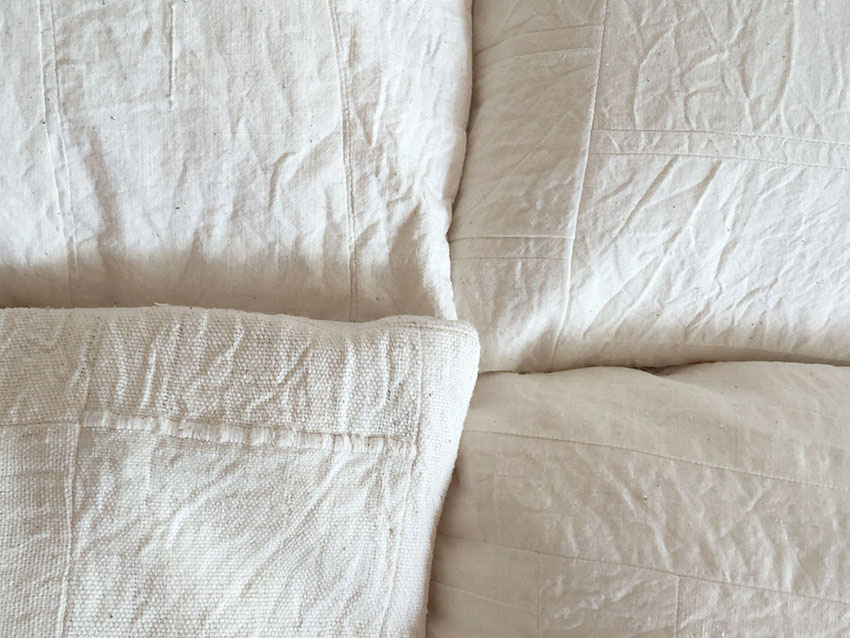
“Fabric is the material that is closest to our body in everyday life. A nice texture has the power to soothe our soul,” said Isobe in an interview. I could vividly understand her statement when the skin of my eyelids was touching the Khadi fabric that she chose.
